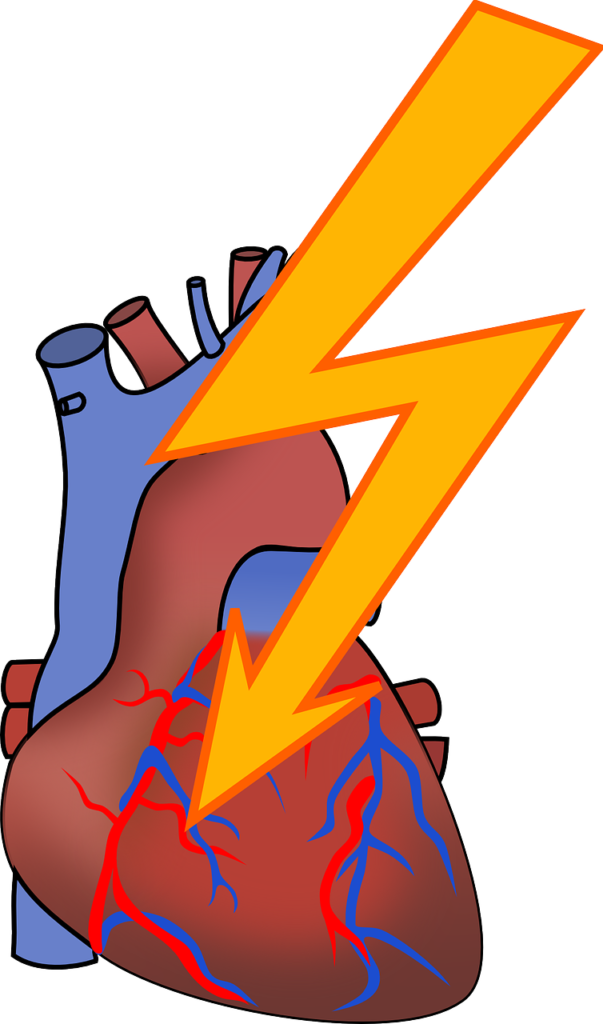Arrhythmias can have various causes and risk factors, including:
- Heart Conditions: Structural abnormalities or damage to the heart, such as coronary artery disease, heart failure, cardiomyopathy, congenital heart defects, or heart valve disorders, can predispose individuals to arrhythmias.
- Electrolyte Imbalances: Abnormal levels of potassium, sodium, calcium, or magnesium in the bloodstream can disrupt the heart’s electrical activity and trigger arrhythmias.
- Medications: Certain medications, such as antiarrhythmic drugs, beta-blockers, calcium channel blockers, or medications that prolong the QT interval, can increase the risk of arrhythmias.
- Stimulants: Substances such as caffeine, nicotine, alcohol, illicit drugs (e.g., cocaine, amphetamines), or certain prescription medications (e.g., decongestants) can trigger or exacerbate arrhythmias.
- Medical Conditions: Underlying medical conditions such as thyroid disorders, diabetes, sleep apnea, electrolyte disorders, or autonomic nervous system dysfunction can contribute to arrhythmias.
- Age: The risk of arrhythmias increases with age, particularly in individuals over 65 years old, due to age-related changes in the heart’s electrical conduction system.
- Genetic Factors: Inherited conditions such as Long QT syndrome, Brugada syndrome, or familial atrial fibrillation can predispose individuals to arrhythmias.
Symptoms of Arrhythmia
The symptoms of arrhythmia can vary depending on the type, severity, and underlying cause of the irregular heart rhythm. Common symptoms may include:
- Palpitations (sensations of rapid, fluttering, or irregular heartbeat)
- Chest pain or discomfort
- Shortness of breath
- Dizziness or lightheadedness
- Fainting or syncope
- Fatigue or weakness
- Sweating
- Anxiety or panic
Diagnosis of Arrhythmia
Diagnosing arrhythmias typically involves a combination of medical history, physical examination, and diagnostic tests, including:
- Electrocardiogram (ECG or EKG): A non-invasive test that records the heart’s electrical activity to detect and characterize abnormal heart rhythms.
- Holter Monitor or Event Recorder: Portable devices worn by the patient to continuously monitor heart rhythm over 24 hours (Holter monitor) or longer periods (event recorder) to capture intermittent or asymptomatic arrhythmias.
- Echocardiogram: An ultrasound of the heart that provides detailed images of the heart’s structure and function, helping to assess for underlying heart conditions associated with arrhythmias.
- Stress Test: Exercise or pharmacological stress testing can evaluate the heart’s response to physical exertion and detect arrhythmias that may occur during exercise.
- Electrophysiology Study (EPS): Invasive procedure performed in a specialized cardiac catheterization laboratory to evaluate the heart’s electrical conduction system and induce and characterize arrhythmias.
Treatment of Arrhythmia
Treatment options for arrhythmias depend on the type, severity, underlying cause, and individual patient factors. Treatment goals may include:
- Managing Underlying Conditions: Treating underlying medical conditions such as heart disease, hypertension, or thyroid disorders can help reduce the risk of arrhythmias.
- Medications: Antiarrhythmic drugs, beta-blockers, calcium channel blockers, or other medications may be prescribed to control heart rate, restore normal sinus rhythm, or prevent recurrent arrhythmias.
- Cardioversion: Electrical cardioversion or pharmacological cardioversion may be performed to restore normal sinus rhythm in individuals with atrial fibrillation or other supraventricular tachyarrhythmias.
- Catheter Ablation: Minimally invasive procedure performed in a specialized cardiac catheterization laboratory to destroy abnormal electrical pathways or tissue responsible for causing arrhythmias.
- Implantable Devices: Devices such as pacemakers, implantable cardioverter-defibrillators (ICDs), or cardiac resynchronization therapy (CRT) devices may be implanted to monitor and regulate heart rhythm or treat life-threatening arrhythmias.
- Lifestyle Modifications: Adopting healthy lifestyle habits such as regular exercise, balanced diet, smoking cessation, stress management, and limiting alcohol and caffeine intake can help reduce the risk of arrhythmias and improve overall heart health.
Conclusion
Arrhythmias are a diverse group of heart rhythm disorders characterized by irregularities or abnormalities in the heart’s electrical activity. While many arrhythmias are benign and asymptomatic, others can be serious or life-threatening and require medical intervention. Early diagnosis, appropriate treatment, and lifestyle modifications are essential for managing arrhythmias, reducing the risk of complications, and improving quality of life for individuals affected by these conditions. If you experience symptoms suggestive of arrhythmia or have concerns about your heart health, it is important to seek medical evaluation and consultation with a healthcare professional for diagnosis and management.




